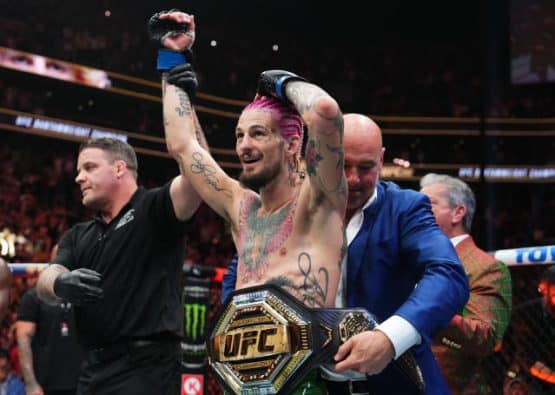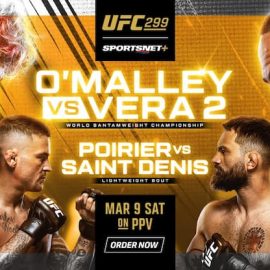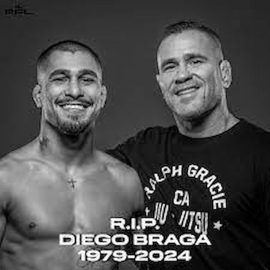
You can’t go to your favorite message board, Twitter or Facebook without hearing dozens of MMA fans complain about the latest UFC card. Everybody seems to be on the train that there isn’t enough firepower on these cards. Whether injuries, booking or other issues are at the root cause, fans don’t seem to care. However, we need to ask ourselves, are these perceptions based in reality, or have we just entered an era in which sports fans feel like they deserve better? I dove into some of the cards from the past to take a look at whether we can nail down if this problem is for real.
BASIS
For the basis of this study, we’ll assume that the presence of ranked fighters make the card significant. Although some people look for top 10 talent or, if they are really picky, top five talent, I decided that top 15 was a reasonable cutoff. This is also tricky because a card headlined by a #15 ranked fighter is generally seen as less exciting than one that has he/she fourth from the top. Perhaps in a future follow up, we’ll take a look at placement.
As a second assumption, we will assume that we believe that all fighters, regardless of skill level, should fight the same number of times a year. The majority likely believes that lower card fighters deserve to get paychecks at a similar rate to higher card fighters, even if they make much less. In all actuality, fighters on the lower portions of the card might actually fight more frequently due to fighting through injury and willingness to take short notice fights (that’s a study for a different time though). However, we will treat them as if they should have the same amount.
NUMBER OF FIGHTERS
There are currently 12 divisions in the UFC with an active top 15 ranking system in place. That equates to a total of 180 ranked fighters in the UFC. According to BloodyElbow’s listing of current UFC fighters (as compiled by Zane Smith), there are 573 active UFC fighters at the time of compiling this article. That means a total of 31.41% of fighters are currently ranked between numbers 1-15. When you add in the champions of each of those divisions, we wind up with a grand total of 192 fighters with a number next to their name, which is good for 33.51%.
LOCAL CARDS
The first cards we’ll look at are the local cards of 2018. We generally accept that local cards have less firepower than pay-per-views. Below is the number of fighters on the card along with the amount of ranked fighters.
| Card Location | Number of Fighters | Number Ranked | Ranked Percentage |
| St. Louis | 22 | 6 | 27.27% |
| Charlotte | 24 | 6 | 25% |
| Belem | 22 | 5 | 22.72% |
| Austin | 22 | 6 | 27.27% |
As you can see above, the percentage of ranked fighters per card is well below the average of the roster. While this makes sense for local cards based on our expectations, it may be a potential talking point for those among us that claim the UFC is not stacking their cards well enough.
MAJOR CARDS
For major cards, fans expect far more in the way of stars. For this I’ve included the first two pay-per-views of 2018, as well as the upcoming UFC on Fox in Orlando. While I recognize that Charlotte was also a UFC on Fox card, its location paired with its publicity made it seem to fit better in the other category. Below are the numbers for these three cards.
| Card Location | Number of Fighters | Number Ranked | Ranked Percentage |
| Boston (UFC 220) | 22 | 9 | 40.90% |
| Perth (UFC 221) | 24 | 7 | 29.16% |
| Orlando (Fox) | 28 | 10 | 35.71% |
As you can see, with the exception of Perth, each of these cards exceeds the expected percentage of ranked fighters on the card. It should also be noted that Perth had two other ranked fighters that were removed due to a matchup shuffling.
Overall this shows that the UFC is still stacking their larger cards with higher profile fighters to make up for the fact that they have fewer on the local cards.
CONCLUSION
Ultimately, where does this leave us for the total? Well, if we look at the combined numbers, there was a total of 49 ranked fighters through the Orlando card out of a total of 164 fighters. This makes for a percentage point of 29.87%. This is slightly lower than the 33.51% average, but is it low enough to make the complaint about the cards significant? Not really, and here’s why.
The amount it would take to get the matchups to be a representative sample is one additional ranked fighter per card. This would not barely be noticeable when looking at a fully composed card. The Belem and St. Louis cards did not feel significant in difference, yet this is exactly the difference that would be needed to make the sample.
So what does this mean for the complaints?
Firstly, it likely means that these complaints are all in our heads. It means in reality, we probably are missing the big card feel of the mega-stars that have since moved on from MMA far more than we are missing matchups that have significance in their division.
Secondly, since the sample shows, at least on a small scale, that the cards are representative of the roster, it means that our complaints have more to do with the composition of the UFC’s roster. If we’d like more stacked cards, we’d have to hope for a trimming of the roster and a trimming of events. While that might appeal to some, we can assume that no business is going to turn away events that make money and cut lower tier fighters trying to make a living so that we can be wowed more when we do turn in.
Add The Sports Daily to your Google News Feed!









